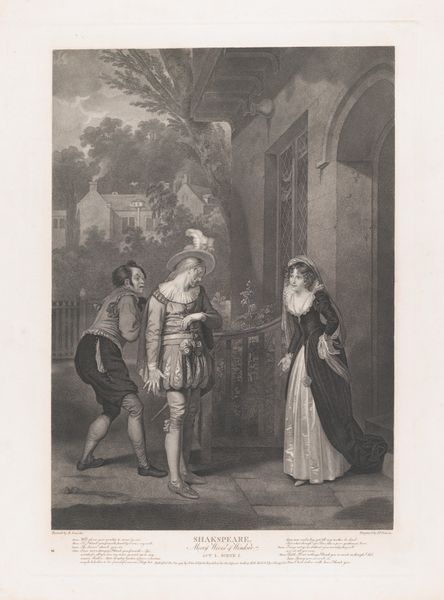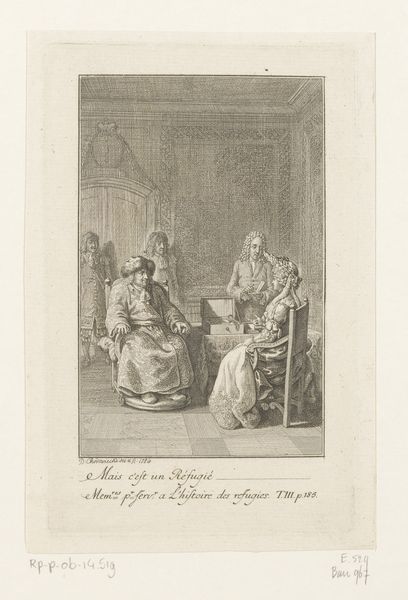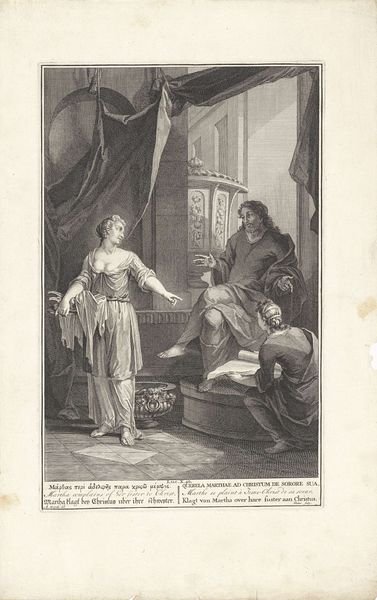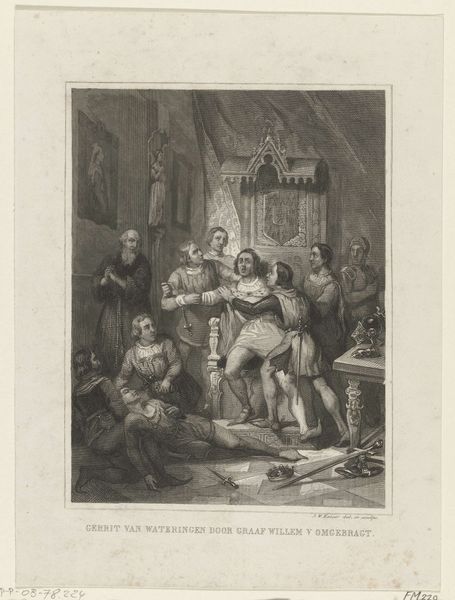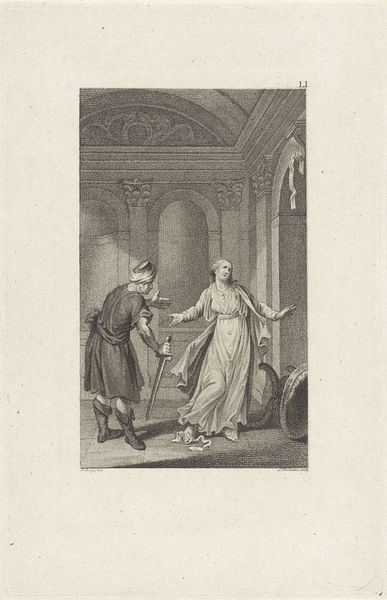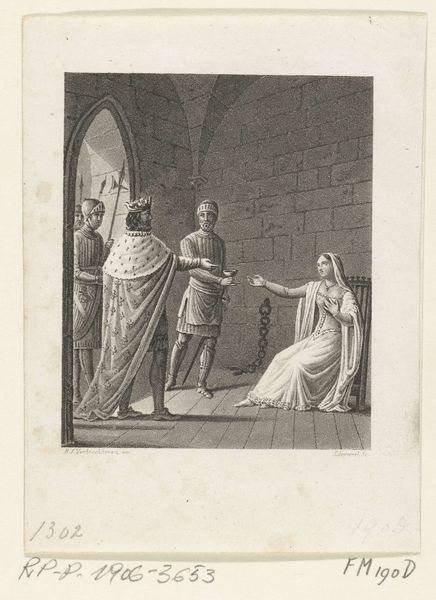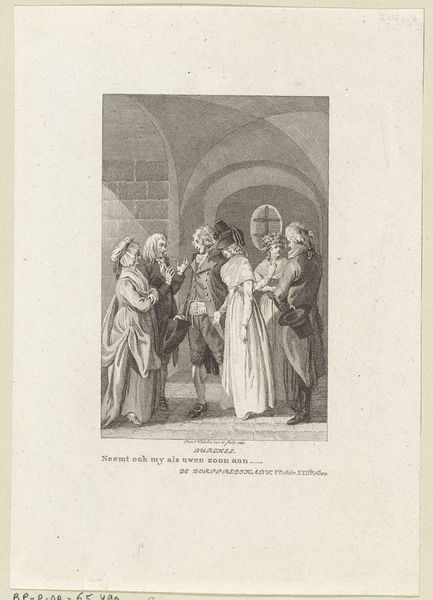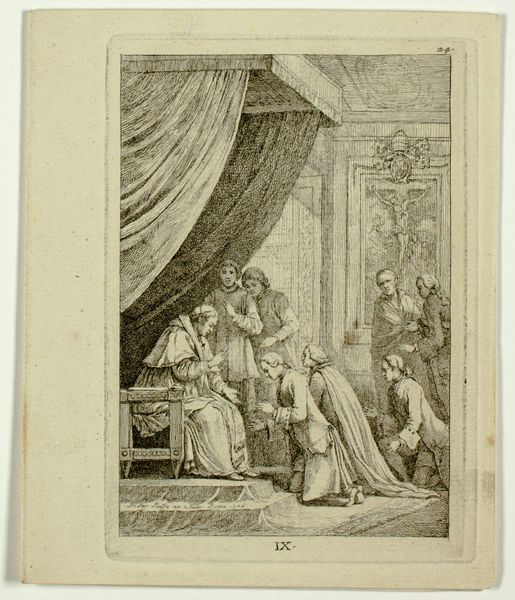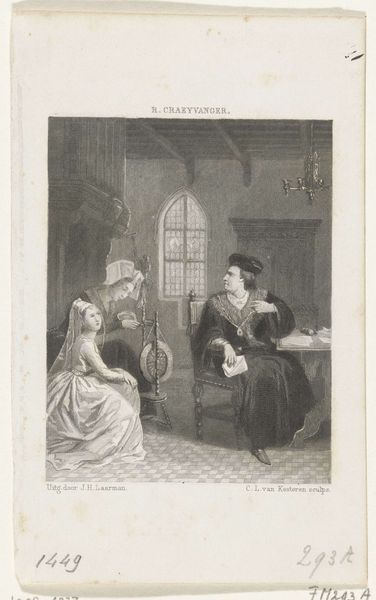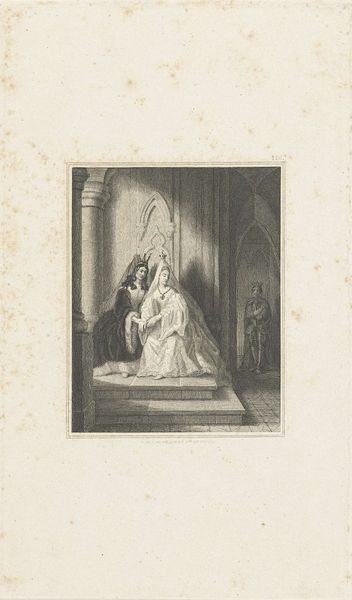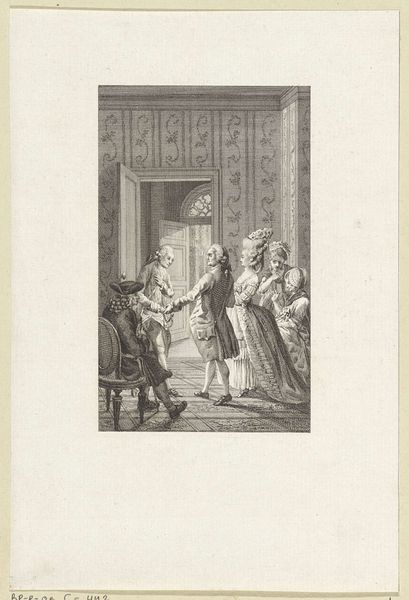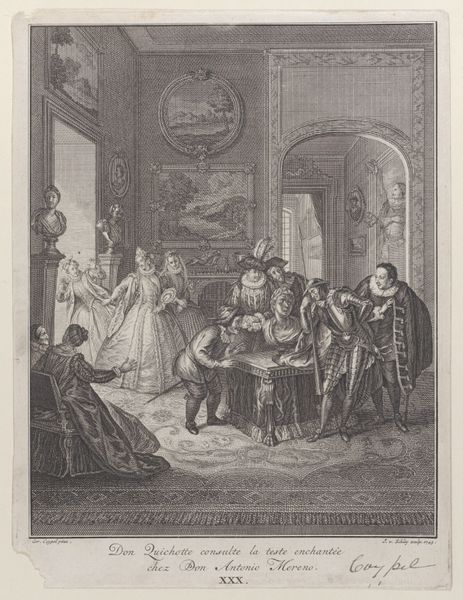
#
aged paper
#
toned paper
#
light pencil work
#
photo restoration
#
pencil sketch
#
old engraving style
#
personal sketchbook
#
old-timey
#
19th century
#
watercolour illustration
Dimensions: height 103 mm, width 85 mm
Copyright: Rijks Museum: Open Domain
Editor: Here we have "Johanna van Vlaanderen en Boudewijn IX, 1225" created between 1841 and 1843 by Johannes de Mare. It appears to be a pencil sketch or engraving, with incredible detail given the age of the paper it’s on. It’s got a somber, old-timey feel to it. How do you interpret this work? Curator: I see a meticulous creation using readily available materials, highlighting the labor involved in its production. The "old engraving style" as you mentioned isn’t just aesthetic; it’s indicative of the printmaking technology and visual culture of its time and of the 19th century’s fascination with the past. Consider the social context: who was commissioning and consuming such imagery, and what did they value? Was this image created for mass production? What's your assessment? Editor: I hadn't thought about the broader context like that. I guess I assumed this style was simply how things looked then, and about its cultural consumption, assuming the intention was to illustrate history. How did printing practices influence artwork such as this one? Curator: Precisely! The mechanics of engraving, the artist's choices of line and tone, the paper itself - these elements are inseparable from the final image and the potential for wider circulation. The economic aspects of art production shaped what stories were told, how they were visualized, and who had access to them. Notice how the image presents not an accurate historical representation, but rather a dramatic interpretation, influenced by the printing process. Are you curious if similar illustrations existed at that time? Editor: Yes, definitely. This focus on the practical aspects really changes how I look at it. Before, I saw only a scene; now I see layers of production and consumption. Curator: Indeed, by looking at the means of production, we reveal a wider story than simply what’s depicted. Examining labor, the materials, and the networks of consumption offer critical new insight.
Comments
No comments
Be the first to comment and join the conversation on the ultimate creative platform.
